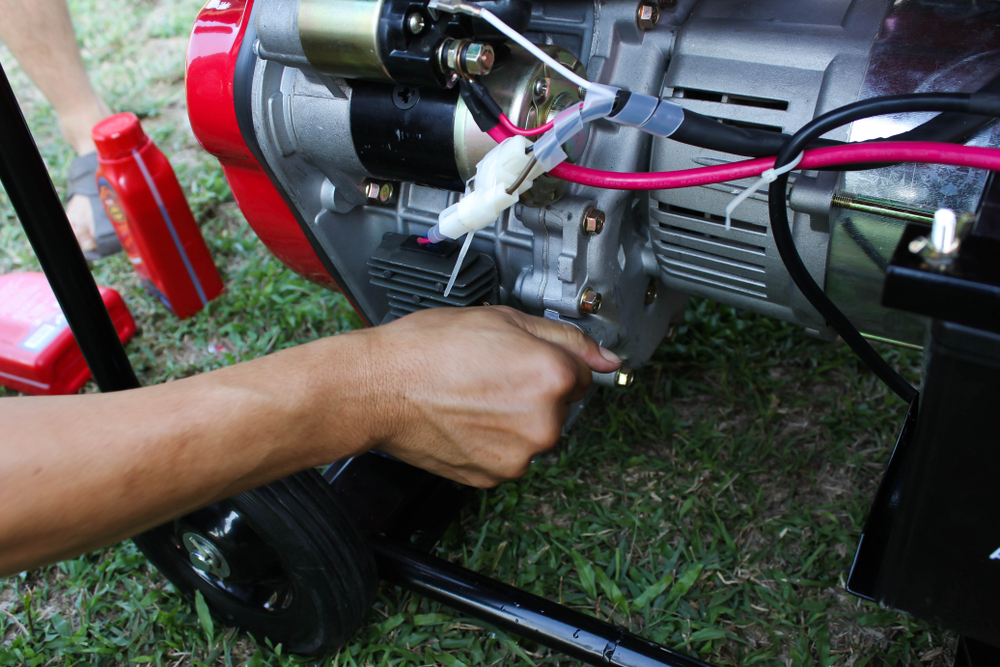
When the lights go out, your backup generator is your home’s silent hero. But here’s the catch your generator won’t do much good if it isn’t ready to perform when it matters most. Regular maintenance is the key to ensuring your generator starts instantly, runs smoothly, and keeps your home powered during outages.
If you’ve invested in a generator, this checklist is your go-to guide for keeping it in peak condition. Whether you own a portable unit or a whole-home standby system, this maintenance plan will help you avoid common issues and protect your investment.
Why Generator Maintenance Matters
Reliability Starts with Routine
Generators are like cars they need regular attention to perform reliably. Even if your generator isn’t running daily, its internal components age over time. Oil breaks down, filters clog, and batteries drain. Waiting until a storm hits to test it is simply too late.
Avoiding Emergency Disappointments
Imagine this: a major power outage hits, you fire up your generator and nothing happens. That scenario is more common than it should be, and it's usually preventable. With regular checks and care, your generator will be ready when your family needs it most.
Weekly and Monthly Checks
Keep It Simple, But Consistent
You don’t have to be a technician to keep tabs on your generator. A few quick checks each week or month can go a long way. First, visually inspect your unit. Look for any leaks, rust, or rodent activity around the generator. These small signs can signal bigger problems down the line.
Next, check your fuel levels and battery charge. For portable generators, make sure you’ve stored fresh fuel and run the engine for at least 5–10 minutes each month. This prevents stale fuel and lubricates engine components.
Test It Regularly
If you own a standby generator, most models have an automatic self-test function. Ensure it's scheduled to run once a week. If your unit doesn’t have auto-testing, manually start it up to ensure everything sounds and runs smoothly. Listen for strange noises or erratic performance.
Quarterly Maintenance Tasks
Change the Oil and Filters
Every 3–6 months (or after around 50–100 hours of use), change the generator oil and replace the oil filter. This is one of the most essential tasks to protect the engine from wear. Dirty oil or clogged filters can cause overheating or complete failure.
Always use the oil type recommended in your user manual. If you’re unsure, consult a technician or the manufacturer. Also, remember to dispose of used oil safely many local auto shops or recycling centers accept it.
Check the Spark Plugs and Air Filter
Remove the spark plugs and inspect them for buildup or corrosion. If they look worn, replace them. A fresh spark plug ensures easier starts and better fuel efficiency. Also, clean or replace the air filter so the engine gets the airflow it needs to perform at its best.
Semi-Annual and Annual Inspection
Battery, Connections, and Coolant
Every six months, inspect the generator’s battery. Check for corrosion on the terminals and ensure all connections are secure. Weak batteries are one of the top reasons generators fail to start. Clean the terminals with a baking soda and water mix if needed.
For liquid-cooled models, check coolant levels and inspect hoses for cracks or wear. Low coolant or leaks can lead to overheating, which can permanently damage your unit.
Schedule a Professional Service
Once a year, it’s wise to call in a certified technician for a complete system inspection especially for standby generators. Professionals will test voltage output, adjust valves if needed, and confirm the generator meets safety standards.
Even if you’re diligent with DIY checks, there’s no substitute for a trained eye catching early warning signs.
Fuel System & Storage Tips
Keep Fuel Fresh and Safe
Fuel especially gasoline degrades over time. If you use a portable generator, add a fuel stabilizer to keep stored fuel usable for up to 12 months. Otherwise, rotate your fuel stock to ensure freshness.
Never store fuel indoors or near open flames. Use approved containers and label them clearly. For propane and natural gas systems, check your lines for leaks and ensure tanks are filled and accessible.Clean the Carburetor (Portable Units)
If your portable generator runs rough or won’t start, the carburetor could be clogged. Empty the fuel tank and clean the carburetor using a cleaner spray. This can remove varnish buildup and restore proper engine function.
Generator Storage and Weather Protection
Shield It from the Elements
Generators need protection from weather, but they also need ventilation. If your generator is outside, invest in a protective cover that keeps rain and snow out while allowing airflow.
If storing a portable unit for the season, drain the fuel or run the tank dry. Store it in a dry, well-ventilated area away from flammable materials.
Safety First, Always
Never operate a generator indoors or in enclosed spaces. Carbon monoxide is odorless and deadly. Place portable generators at least 20 feet away from your home and point the exhaust away from windows and doors.
Final Thoughts: Stay Ready, Stay Powered
Your generator is more than a machine it’s peace of mind. With a simple maintenance routine, you’ll ensure it’s ready to power your home through any outage. Make these checks part of your regular home care routine, just like changing your HVAC filter or checking your smoke detectors.
By staying proactive, you’ll avoid last-minute surprises, extend your generator’s lifespan, and protect your home and loved ones when it counts most.








